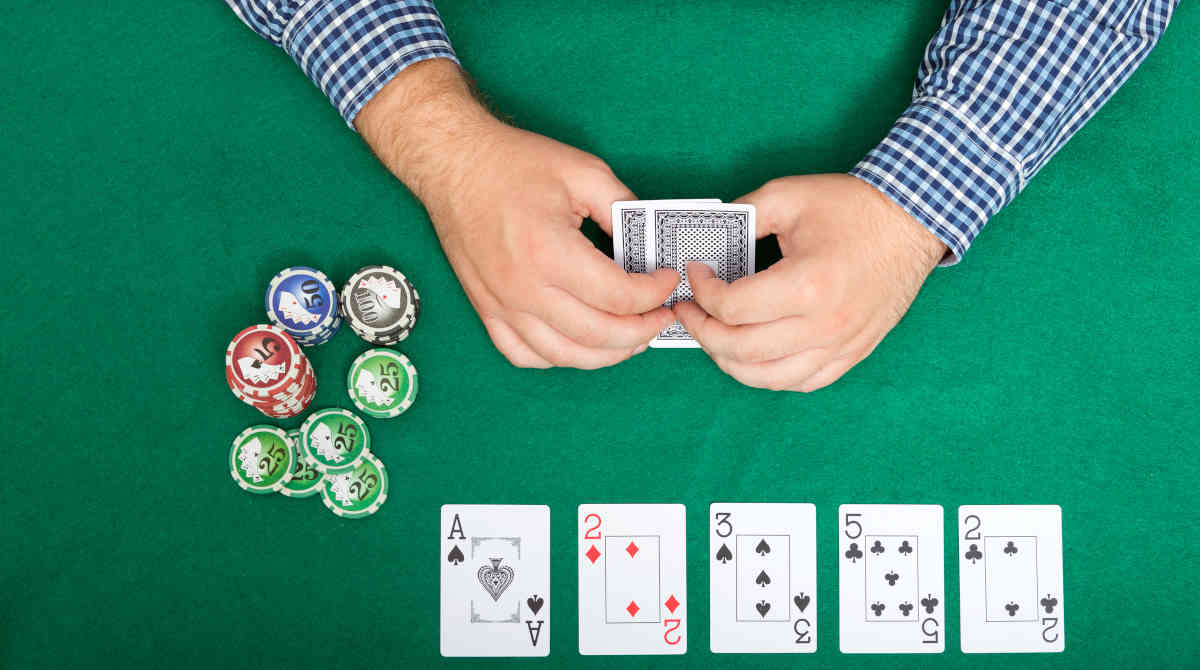How to Read Hands in Poker and Make Better Decisions

7 minutes
In the game of poker, being able to read your opponents’ hands accurately is a crucial skill that can make the difference between winning and losing.
Hand reading involves analyzing your opponents’ actions, physical tells, and betting patterns to determine the range of hands they might be holding.
By mastering the art of hand reading in poker, you can make more informed decisions and ultimately increase your chances of success at the tables.
In this article, we will explore the fundamental techniques and strategies that will help you become better at hand reading in poker.
Understanding Hand Ranges in Poker
In poker, a hand range refers to the set of possible poker hands an opponent might hold based on their actions, betting patterns, and other behavioral cues.
To accurately estimate a player’s hand range, you must use careful observation and deduction combined with your knowledge of the game and your opponent’s tendencies.
Below we list all the factors you should use when evaluating your opponent’s hand range.

Factors That Influence Hand Ranges
Several factors can influence an opponent’s hand range in poker:
- Position
- Play Style
- Stack Size
- Board texture
- Number of players in the hand
- Game format
In the following paragraphs, we will break down each factor and how it influences hand ranges in poker.
How Position Influences Hand Ranges in Poker
When it comes to determining hand ranges in poker, position should always be the first factor you consider.
A player’s position at the table significantly impacts the range of hands they are going to play.
Players in earlier poker positions will typically be more conservative with their hand selection since they have less information about the strength of their opponent’s hands.
As the position moves around the table toward the button, players gather more information about their opponents’ actions and are more likely to widen their hand range.
The player on the button will usually have the widest range since they act last in each betting round after the flop and can thus gather the most information.
The general guideline for determining your opponents’ ranges should be the earlier they act in the hand, the tighter their range will be.
How Play Style Influences Hand Ranges in Poker

The second factor that significantly impacts the range of hands that players are likely to play is their play style.
Once you determine the play style of your opponents’, it should be pretty easy to understand which ranges of hands they play.
For example, tight players lean more towards playing a narrow range of strong hands, while loose players may play a wide range of hands, including weaker ones.
An aggressive player may be more likely to play a wider range of hands as they believe that their play style will make up for the fact that they have some weaker hands in their range.
A passive player, on the other hand, may play a more conservative range of hands, preferring to wait for strong holding before committing chips to the pot.
How Stack Size Influences Hand Ranges in Poker
One of the factors that newbie poker players often neglect when determining hand ranges is stack size.
This can lead to some wrong estimates since good poker players will constantly adjust their ranges based on the effective stack size.
When the effective stack sizes are deeper, players will include more combinations that can make big hands in their hand range.
Again, this is because they want to either have a strong hand or a strong draw after the flop, so it is worth risking a lot of chips.
Based on the same approach, when the effective stack is shallow, players will widen their ranges since the stack-to-pot ratio will be lower, and they will not be forced to risk too many of their chips when they get involved in a hand.
For this reason, the impact of stack size on hand ranges is crucial in making informed decisions, particularly when facing all-in bets or considering making significant investments in the pot.
How Board Texture Influences Hand Ranges in Poker

Another important aspect of reading hand ranges is understanding the board’s texture and how it influences the range of hands that players are likely to play.
When it comes to using factoring in the board, the texture is one of the tools to narrow down the range of hands that your player might have; things are more complex than with using some other factors.
For this reason, it is always essential to use board texture in combination with other elements to make a correct read.
For example, a loose-aggressive player may widen the number of hands he will call or raise on a wet board. A tight-passive player may narrow down his hand range and play even his strong hands passively on a wet board.
Learning how to use effectively read and use board texture to determine the range of hands your opponents might have, takes a lot of practice, and you will become better at this the more you play and study.
How the Number of Players in the Hand Influences Hand Ranges in Poker
One of the most important factors to consider when putting your opponent on a range of hands is the number of players in the hand.
In this sense, we can put all poker hands into two main categories: heads-up pots and multi-way pots.
Heads-up pot is a term used for hands in which only two players are competing for the pot. In these types of hands, players are more likely to play a wider range of hands since they only need to worry about one opponent.
In contrast, in multi-way pots, players tend to play more conservative ranges as they prefer to wait for stronger hands that have better equity and are more likely to beat multiple opponents.
Furthermore, since equities run close in multi-way pots, poker players lean towards playing combinations that can flop big made hands or big draws, which means suited connectors and Broadway combinations.
How Game Format Influences Hand Ranges in Poker
Lastly, game format is one of the significant factors that will impact the range of hands that your opponents play.
For example, in No-limit Texas Hold’em, players tend to play a wider range of hands as they can potentially win a large pot since they can bet as much as they want when they hit their hand.
In Limit Hold’em, however, on average, players will play a more conservative range of hands, as there are limits on the amount of money that can be wagered in each round.
Additionally, in tournament play, players will adjust their hand ranges based on the size of the blinds and antes and their position relative to the chip leader and other players at the table.
The Process of Hand Reading in Poker Explained

Before we start breaking down the process of hand reading in poker, there is one thing that you need to understand so that you can avoid some of the mistakes newbie poker players make.
The most important thing about hand reading in poker is understanding that this technique or approach is used to put your opponent on a range of hands (not to predict their exact hand) and proceed with your decisions accordingly.
The step-by-step process for hand reading in poker:
- Assume that your opponents use the same ranges as you until you get a better read
- Observe the action; pay attention to the actions of the players involved in the hand, including their betting patterns, position, and any other relevant information that we’ve mentioned before
- Narrow down potential hand ranges; based on the observed actions and the player’s overall playing style, start narrowing down the possible range of hands he could have.
- Consider the board; pay attention to see if your opponent’s betting patterns have changed after community cards have been dealt with.
- Eliminate unlikely hands; based on the observed action and the board, eliminate hands that are not likely in your opponent’s range.
- Make a decision; based on your hand reading analysis, decide whether to continue in the hand, bet, raise, or fold.
- If you get to see your opponent’s hand make a mental note of your thought process and how accurately you have predicted the hand so that you can improve in future
When it comes to hand reading in poker, one of the most important things is to constantly update your analysis based on the new information that becomes available and adjust your decisions accordingly.
- Poker Squeeze Play – Which Hands Make the Most Sense for Squeezing? - August 10, 2023
- How to Play Low Pocket Pairs in Texas Hold’em - July 29, 2023
- How to Make Deep Runs in MTTs More Often - July 22, 2023














